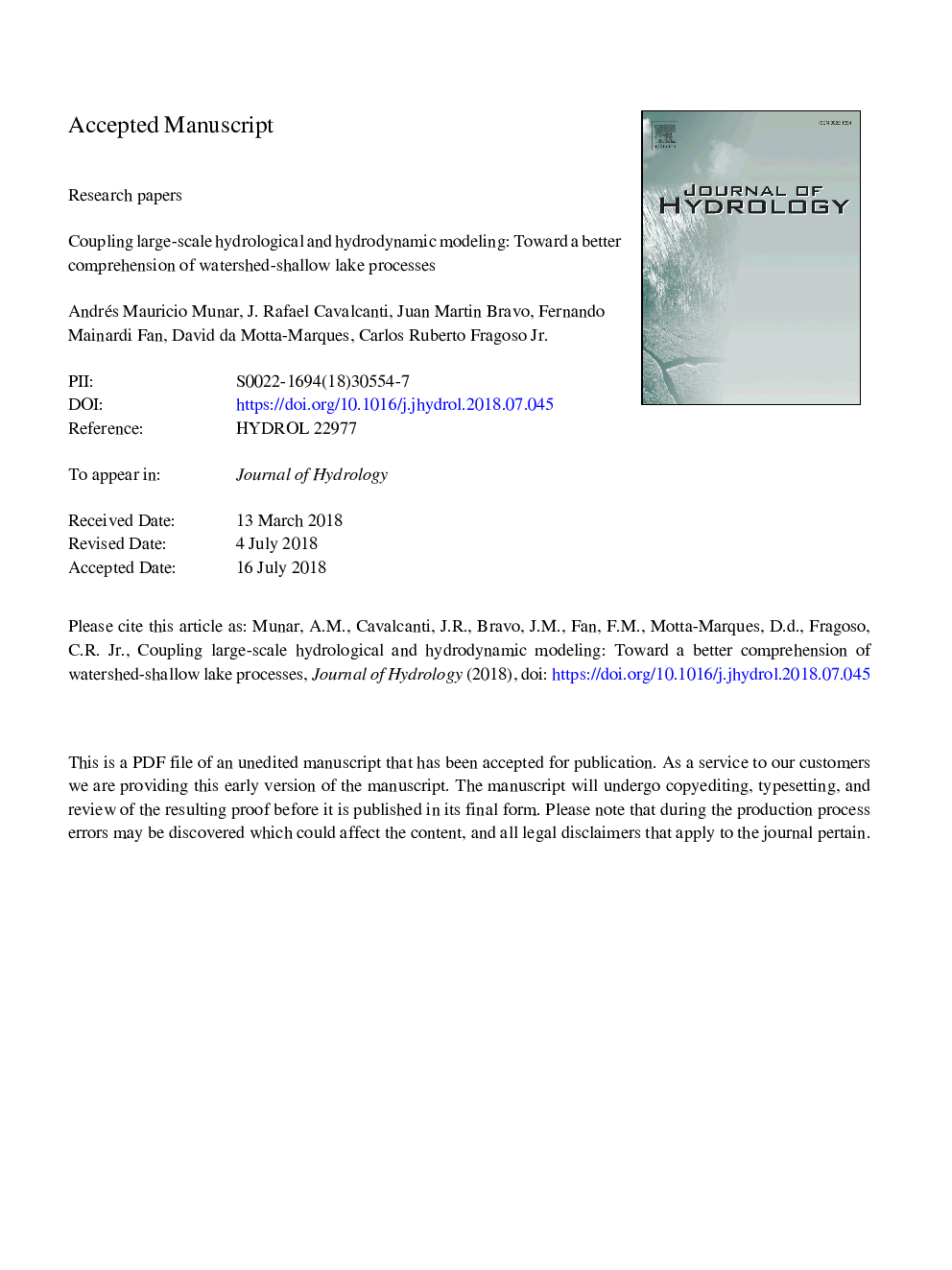| کد مقاله | کد نشریه | سال انتشار | مقاله انگلیسی | نسخه تمام متن |
|---|---|---|---|---|
| 8894484 | 1629890 | 2018 | 27 صفحه PDF | دانلود رایگان |
عنوان انگلیسی مقاله ISI
Coupling large-scale hydrological and hydrodynamic modeling: Toward a better comprehension of watershed-shallow lake processes
ترجمه فارسی عنوان
مدل سازی هیدرولوژیکی و هیدرودینامیکی در مقیاس بزرگ: به منظور درک بهتر از فرآیندهای دریاچه حوضه کم
دانلود مقاله + سفارش ترجمه
دانلود مقاله ISI انگلیسی
رایگان برای ایرانیان
کلمات کلیدی
موضوعات مرتبط
مهندسی و علوم پایه
علوم زمین و سیارات
فرآیندهای سطح زمین
چکیده انگلیسی
Changes in hydrological processes in large watersheds may heavily impact the dynamics of downstream aquatic ecosystems such as lakes and reservoirs. In general, simple approaches that neglect the spatial heterogeneity of watersheds impede understanding of the many processes occurring in these downstream aquatic ecosystems. In most cases, observed river discharges are used as the boundary condition for lake/reservoir modeling, which limits analyses of different situations and of areas that are ungauged or water bodies with little data available. Therefore, coupling hydrological models with hydrodynamic models seems to be a promising approach to allow one to understand how catchment features (e.g., land use, topography) and river discharges impact the dynamic patterns, including local circulation patterns, water levels and water quality in large water bodies in response to basin-wide forcing factors. In this study, we used a complex, spatially explicit, integrated approach to assess the hydrological responses to external forcing factors such as wind and river discharges, in the hydrodynamics of a large shallow subtropical lake. A large-scale integrated system composed of several sub-watersheds and a lake was analyzed by coupling a large-scale hydrological model with a hydrodynamic model. Our findings indicated that (i) the integrated model improved the capacity for representing the spatial and temporal variability of lake water-surface levels; (ii) the main hydrodynamic processes (water levels and flow structure) are controlled on a seasonal scale (months) by the river discharges, and on a short time scale (days) by wind influence (intensity and direction); and (iii) the modeling strategy allowed evaluation of anthropogenic stressors such as irrigation withdrawals on lake levels. This approach is an attempt to develop a physically based management model to simulate complex systems as a whole, allowing one to understand the main factors controlling the hydrodynamic processes and water levels, and accounting for internal (e.g., recirculation, horizontal mixing) and external factors (e.g., anthropogenic stressors, irrigation).
ناشر
Database: Elsevier - ScienceDirect (ساینس دایرکت)
Journal: Journal of Hydrology - Volume 564, September 2018, Pages 424-441
Journal: Journal of Hydrology - Volume 564, September 2018, Pages 424-441
نویسندگان
Andrés Mauricio Munar, J. Rafael Cavalcanti, Juan Martin Bravo, Fernando Mainardi Fan, David da Motta-Marques, Carlos Ruberto Jr.,
